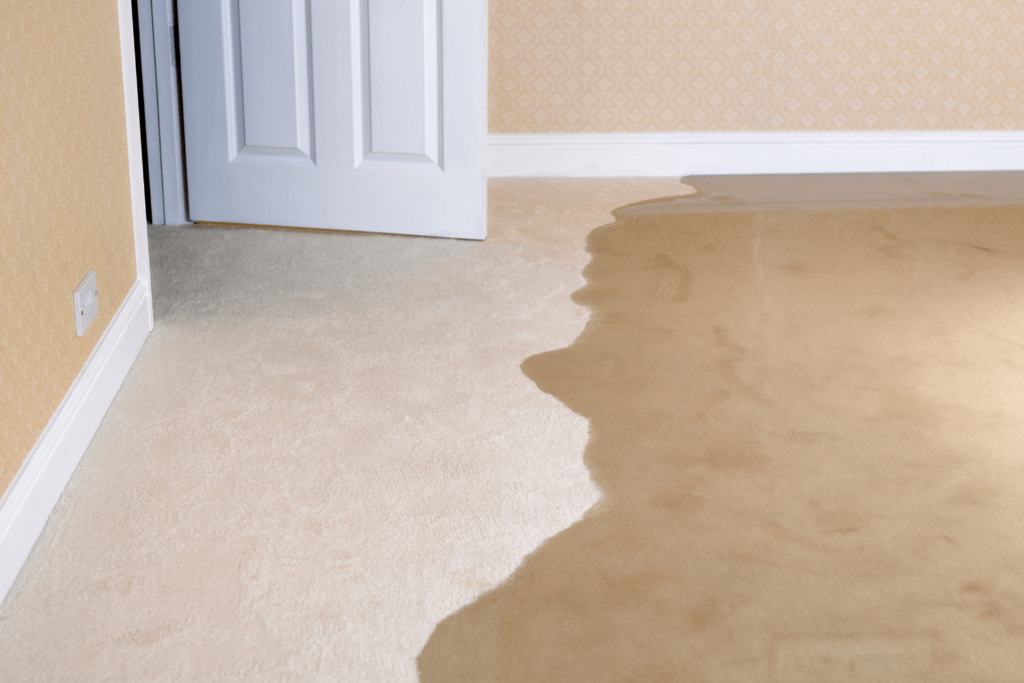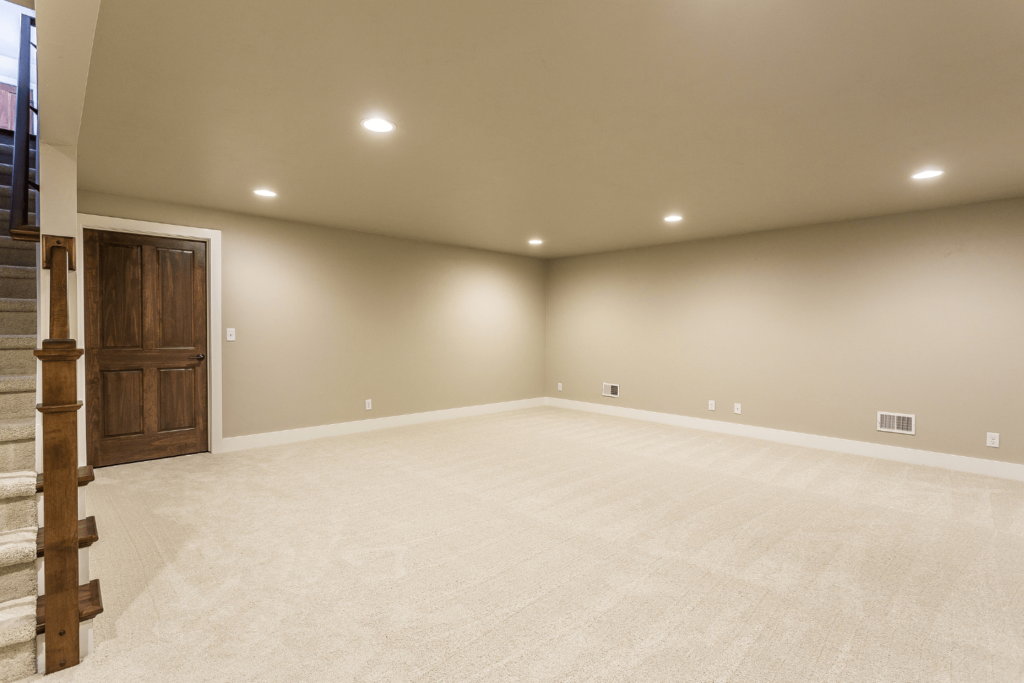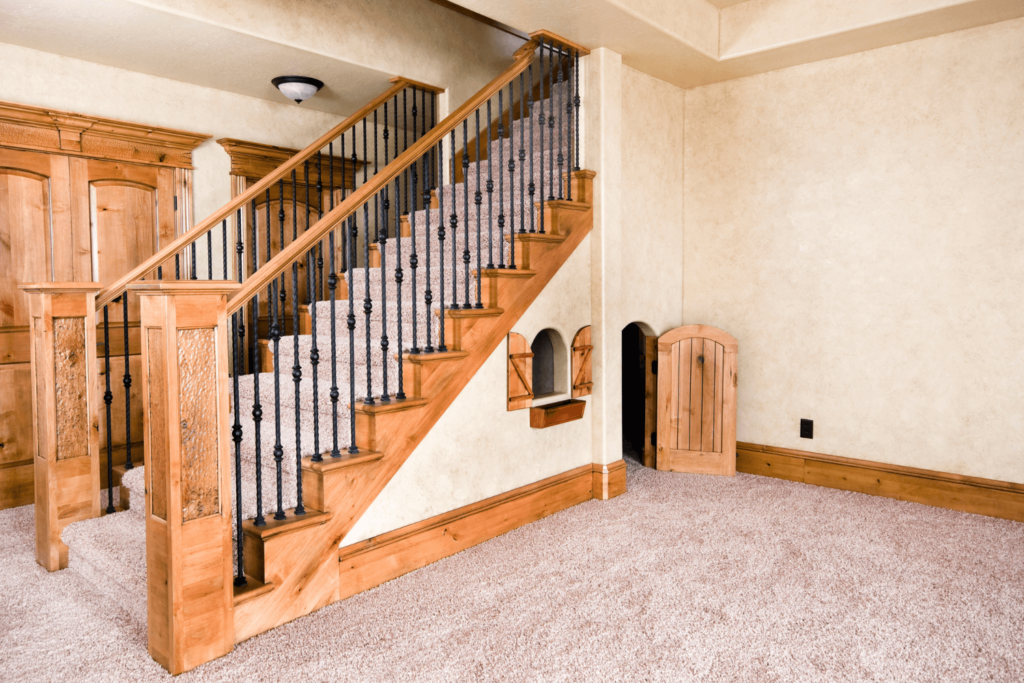If you’re using your basement as extra living space, basement carpet can add a cozy touch, but you’ll want to make sure your basement is ready for it. Basement finishing gives you comfortable rooms for sleeping, relaxation, work, or entertainment that are more isolated from the bustle and noise of your upstairs living spaces. Before you start moving in furniture and electronics, however, you need to put in the work to keep out water, pests, and drafts so your underground sanctuary doesn’t become a dank, infested cave. As Western PA’s foundation specialists, we’ve helped plenty of homeowners create the perfect accessory room with soft, dry basement carpet.
The Carpeting Conundrum
The main reason people don’t consider basement carpeting as an option is moisture. Wet carpet feels gross and sounds worse when you step on it, and if left long enough, it starts to mildew, leading to a pervasive stench. That’s why you should never install carpet without basement finishing, and even then, precautions are needed to ensure your investment in your extra rooms is protected. With the right preparation and installation, carpet can be the finishing touch on any living space.
Before You Get Basement Carpet

Before installing basement carpet, you need to have a comprehensive basement waterproofing plan that seals the basement and helps move water away from your home’s foundation. This includes passive and active indoor waterproofing and making sure the land around your home is prepared to capture moisture and transport it to a safe drainage area away from your foundation. That means installing and maintaining gutters and downspouts, properly grading your yard, landscaping with moisture-sequestering plants, and, in extreme cases, installing French drains or rain collectors that can manage larger quantities of rain, snow melt, and runoff.
Inside your basement, you’ll want to seal all cracks and joints, ensure the floor is level, and, if the basement height is high enough, consider installing raised flooring that allows the subfloor to route water to active drainage. You may also want to install a dehumidifier that helps pull moisture out of the air to reduce the risk of condensation and the moisture it can introduce to your below-ground rooms.
Choosing Your Basement Carpet
You need to put just as much care into choosing and installing your basement carpet. Make sure your subfloor is clean and level, and then install a vapor barrier. This thin sheet of plastic helps prevent moist air from rising up through porous concrete or cracks to enter your home. Next, you’ll want to choose a moisture-resistant carpet pad to go underneath your basement carpet for comfort and cushioning. Finally, opt for a carpet made with synthetic fibers that won’t soak up moisture, decreasing the risk of mold or mildew. It should also be breathable to further reduce the risk of moisture becoming trapped underneath your carpeting.
When installing your carpet, the layers need to be stretched taut before they’re secured, the same way they should be on any floor. This prevents bubbles and loose areas that can become tripping hazards or moisture catches. Trim the edges closely and tuck them securely to minimize the risk of providing hiding places for pests.
Caring for Your Basement Carpet

One of the most important things to keep in mind when caring for your basement carpet is to make any cleanup or maintenance a priority. Spills that penetrate through the padding to the vapor barrier are harder to completely remove, so vacuuming or soaking the spill up while it is still at the surface level of your carpet is key. Sugary spills and food crumbs can also attract rodents and bugs that are looking for a free, quick meal. Once they arrive, they will quickly make a home in your furnishings and walls, putting all the work you did finishing your basement at risk.
Likewise, you’ll need to move quickly if there’s any sign of water infiltration, flooding, or a leak. While your carpet selections should be water-resistant, they can be damaged by prolonged contact with moisture, just like concrete, mortar, wood, and many other home-building materials. A wet/dry vacuum can be used to pull small to moderate amounts of water out of an area of carpet for removal, and area fans will provide better airflow for drying. If your carpet is sodden, under standing water, or there are other signs of a basement or plumbing leak, a home contractor will likely be needed to repair the underlying issue, remove the water and dry the carpet, and identify additional opportunities to prevent flooding in the future.
Get Your Free Basement Waterproofing Estimate
There’s no cost or obligation to take the first step toward basement carpet by getting a free waterproofing estimate. One of our foundation specialists will schedule a time to visit your property, inspect your yard and basement, and talk to you about your basement finishing goals. They’ll look for any signs of existing damage, current drainage or seepage issues, and risk factors that could put your property in jeopardy in the future. Then, you’ll get a written quote that lays out your home’s protection options in clear, easy-to-understand terms.
We’ll be with you every step of the way, answering your questions, contacting the utilities, and securing the necessary permits to protect your property and get it ready for successful basement carpet installation. Our foundation crew shows up on time, gets the job done, and works to minimize the intrusion on your household’s time so you can get back to enjoying your home.
Contact A.M. Wall Anchor & Waterproofing Today
Now is the time to get the peace of mind that comes with a protected foundation and take the first step toward a finished basement with the carpet you want. Request a free inspection from A.M. Wall Anchor & Waterproofing today.

